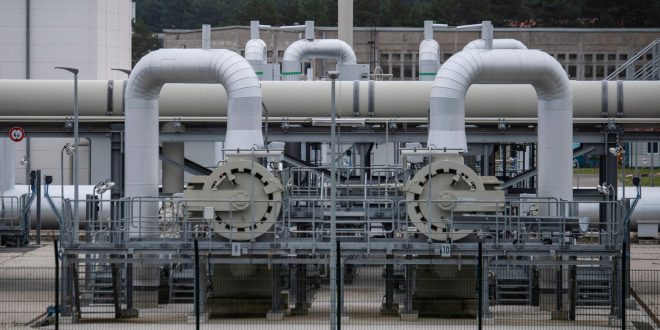Spain has agreed with Portugal and France to substitute plans for a gas pipeline known as Midcat with a new “green corridor” running between Barcelona and Marseille that would channel natural gas and hydrogen, Spain’s PM Pedro Sanchez said on Thursday.
Unlike the Midcat project in the Pyrenees, the new line connecting Spain and its neighbour France will run on the seabed, according to a graphic sent by the Spanish Energy Ministry.
Energy Minister Teresa Ribera said it was a “magnificent decision that deepens solidarity and commitment to renewables”.
Thanks to the green corridor, Barcelona would be connected to the large petrochemical hub of Marseille.
PM Sanchez went on to say that the leaders of the three countries would meet again shortly to discuss the timeline, the required investment, and amount each country would chip in.
Italy’s new right-wing government unlikely to scrap a new FSRU
Concerns about gas shortages were not enough to stop protests against the new liquefied natural gas (LNG) terminal proposed for Piombino, where the mayor and citizens came together in protest to express their dissent on Thursday.
Under the outgoing Mario Draghi government’s plan to replace dwindling Russian gas pipeline supplies in the wake of Russia’s invasion of Ukraine, Rome has given a green light to gas grid operator Snam to spend around USD 400 million with the aim of setting up a new floating storage and regasification unit (FSRU) and have it operational by end-March.
There are no premises for a belief that a new rightist government, set to be sworn in as soon as next week, would roll back Rome’s Piombino line project, which has been endorsed by Italy’s industrial lobby Confindustria.
Linking the mainland with Elba island, Piombino’s port, a popular holiday destination, will enable convenient transport of gas to the densely populated and industrialised north of Italy.
“The most serious thing is that it will pollute the whole sea. From Piombino to Follonica, in a year’s time, with the regasification plant, there will be foam that will reach all the way to the top of the beach,”’ protester Adriano Mieli said while attending the rally against the plant.
“We don’t want to die, that’s all. They are putting a bomb in our port, without knowing what they are really doing,” protester Monica di Fraia told Reuters.
Piombino mayor, a member of Meloni’s party, has stood at the helm of the protest against the project, highlighting risks for safety, the environment and local businesses, including fish farming.
“It is a city that is strongly and transversally opposed to the regasification plant hypothesis. It is a wicked project, wrong, unsafe for the city and a health hazard,” mayor Francesco Ferrari said.
As Russian supply cuts bite, Italy is bent on rushing through the new terminal in a matter of months – a procedure that would otherwise take years due to local objections and permitting.
A preliminary go-ahead for the 5 billion cubic metre capacity (bcm) project in the port of Piombino in the central region of Tuscany, could come as soon as Friday, people close to the matter told Reuters.
But if the sizeable project flies, it would dress Italy in gas reserves ahead of the nearing winter. There is, however, another side to the coin, namely, a slowdown of the country’s transition to renewables.
Italy gas giant Eni’s CEO Claudio Descalzi has warned that, without a new LNG terminal, Italy could face a gas shortfall of 5-6 billion cubic metres, nearly 8 percent of its annual consumption, in the winter of 2023-24.
Mr Descalzi went on to say the new terminal would help refill the country’s storage system that would otherwise run almost empty by the end of this winter and shore up Italy’s energy security.
With little domestic gas production and a ban on nuclear power generation, Italy heavily relies on imports for its energy needs. Last year, before the Ukraine war, Russian gas covered 38 percent of its total consumption.
Rome managed to swiftly secure alternative supplies, but with pipeline deliveries of Azeri and Algerian gas already at their limits, it needs LNG to fully replace Russian imports.
Snam has agreed to keep the FSRU docked in Piombino for three years and to move it to a yet unspecified off-shore location afterwards.
 Iran Energy News Oil, Gas, Petrochemical and Energy Field Specialized Channel
Iran Energy News Oil, Gas, Petrochemical and Energy Field Specialized Channel




